Cuba Continued, Part 2
Introduction
In June of 2019, I travelled to Havana, Cuba with a group of young adults who were participating on a school exchange from Montreal, Canada. I was a volunteer for ARO International, a non-profit organization which organizes cultural experiences for high school students in Cuba, Costa Rica and Peru. The goal of the project is that teenagers participate in daily life in the host country and practice speaking Spanish through full immersion. Instead of staying in an all inclusive hotel, the participants slept in a dorm room with basic bunk beds, cold showers and no-flush toilet. We ate school rations (basic beans and rice) three times a day. Working as a volunteer for ARO International, I accompanied twenty five young adults and their teachers to the island nation of Cuba. This is my second post about Cuba. Below are some observations.
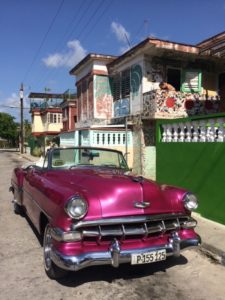
Food, Glorious Food!
Cubans talk a lot about themselves, about politics, about how hard it is to find basic essential items. Ask any Cuban and they will easily name the top American brands of hand soap, pop, clothing, cell phones, etc which are prized over others -and this is despite the American embargo on US goods entering the country. And they also talk a lot about food. Each cuban receives measured rations of rice, beans, sugar, flour, etc which are distributed to each household every other week. The good stuff is sent to the tourist resorts. During one heated conversation about rationing; I learnt that the prison sentence for a Cuban caught eating a beef steak is 10 years minimum. When a person in the group fantasized out loud about eating lizard meat (which is illegal in Cuba) all the cubans claimed that it tastes “Delicious! Just like chicken!”
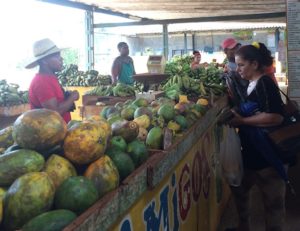
Our group quickly got tired of our bland daily diet of beans and rice.The Canadian youth brought dry pasta and sauce packages in their luggage for the “soirée québécoise.” We thought it would be nice touch to add fresh cheese and tomatoes to the spaghetti dish we planned to prepare for our host. Because fresh cheese and ripe tomatoes are a rare commodity in Havana, this simple idea turned out to be much more complicated than anticipated. I spent the morning walking to three different state run “grocery stores” in search for tomato sauce but the shelves were bare. Next, I tried the corner shop, and even a local bar, to no avail.
I finally found one single can of tomato paste sitting on a lonely shelf in a store near the tourist resort. No cheese and the closest I could find to fresh tomatoes was a battered can of tomato sauce with a faded label written in Italian which cost the equivalent of 8$. It is important to note that 8$ Canadian is roughly the equivalent of one weeks’ salary for a Cuban teacher. And in communist Cuba, everyone makes the same salary, from doctors to garbage collectors, and bus drivers with over 20 years experience. Cubans are great hustlers and the black market works mostly on a barter system. 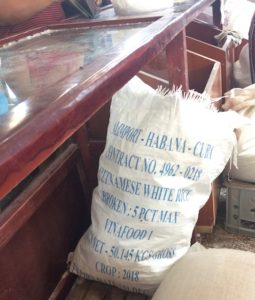
Rice from VietnamIn the end, the meal was a hit. Never has spaghetti tasted so good! Not only because of the change in menu from the repetitive meals but also because we all knew, from having worked side by side with the Cubans in the fields, how much work had been put into planting, growing, and harvesting the vegetables we were eating. I experienced first hand the search for simple ingredients such as a can of tomato paste. The local Cubans appreciated the effort we put into cooking something different for them. The Canadians went to bed a little more appreciative of where their meals come from.

Favourite Moment
My most treasured memory of this trip is of when we were invited into the home of our Cuban teacher-twins for a celebratory “goodbye” meal. They pulled out all the stops for us. After eating basic rations of beans, rice, cabbage, eggs, and the occasional very lean chicken drumstick; it was a nice surprise to see a table laden with so much food. I now appreciated the hustle that had been put in to cobbling together this meal: fish filets, bbq pork chops, fresh tomato and carrot salad, and to drink, Fanta, and Cuban rum.
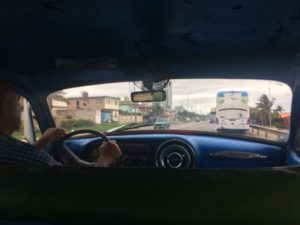
I’m reminded that it does not take much for a Cuban, or a homesick Canadian for that matter, to be happy. We share inside jokes based on moments lived together during the past week. Laughter is the best medicine. For a moment, we forget our hardships, our differences. Take a tummy full of good food, add a splash of rum, along with local music blaring on the jigged stereo system, and you have a recipe for a successful dance party. I let loose and dance like no one is watching!
“La vida es una obra de teatro que no permite ensayos… Por eso, canta, rie, baila, llora y vive intensamente.” An inspirational quote I saw painted on the wall of a curiosity shop in Havana. It loosely translates to: Life is a theater play with no time for dress rehearsals… Therefore, sing, laugh, dance, cry, and live life to the fullest.
Lasting Lessons
More than the meal it was the easy smiles and authentic laughter of the participants that I appreciated. We shared a special moment with this group of unique women who had known each other as neighbours, mothers, sisters, and daughters.
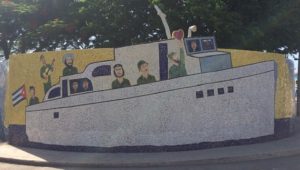
Conclusion
Although I do not condone violence. I understand the intention behind the Cuban protests this past summer. The citizens must be suffering a lot to the point of confronting their regime and protesting on the streets. Tourists often bring extra American dollars and goods to the island in their luggage. Cubans have suffered due to the economic embargo and now the added Covid travel restrictions. My passport is getting dusty, and I’m looking forward to the day we can safely travel again especially because I want to meet new people and learn new things.
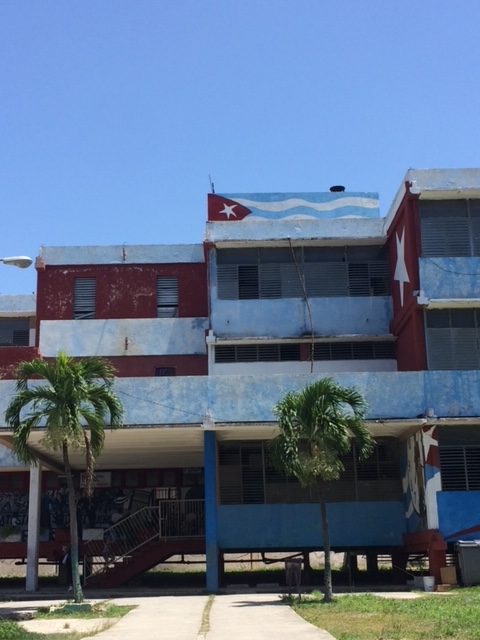
Great read! Let’s hope we can take the dust off our passports soon! Meanwhile, Damas my friend! 😘